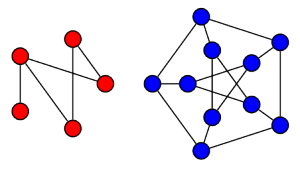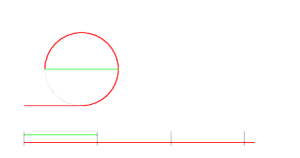Hello everyone!
This week, I'd like to talk about one of my favorite methods of proof: the Pigeonhole Principle. It can be used to prove some rather profound results, but the basic concept is quite intuitive. Say we have  pigeons and
pigeons and  holes and, for some reason, we want to place pigeons into holes. There are a lot of ways to do so, but however we place the pigeons, some hole must end up with at least two pigeons in it. In general, if we have more pigeons than holes, some hole has to end up with at least two pigeons. That's the Pigeonhole Principle.
holes and, for some reason, we want to place pigeons into holes. There are a lot of ways to do so, but however we place the pigeons, some hole must end up with at least two pigeons in it. In general, if we have more pigeons than holes, some hole has to end up with at least two pigeons. That's the Pigeonhole Principle.
Continue reading Pigeonhole Principle




















